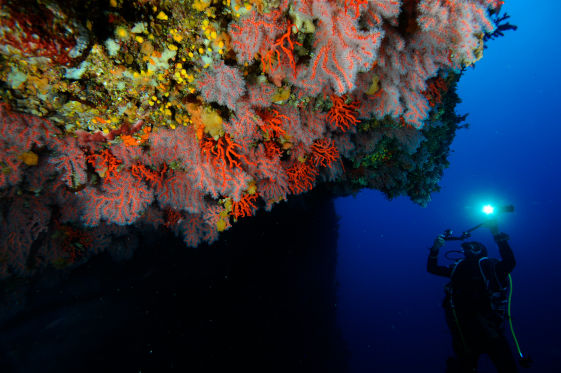Biodiversity declining in Catalonia with 25% fall in animal populations in 18 years
'The State of Nature and Biodiversity in Catalonia 2020' notes 54% wildlife loss in rivers, lakes and wetlands

Catalonia is experiencing a progressive and widespread decline in its biodiversity, according to a report published on Wednesday by the Department of Territory and Sustainability, in collaboration with more than 40 organizations.
'The State of Nature and Biodiversity in Catalonia 2020' shows that, on average, populations of vertebrates and invertebrates for which tracking data exists have lost one in four individuals over the past 18 years.
The numbers lost exceed 54% among species that dwell in rivers, lakes and wetlands, 34% among those that live in agricultural environments and meadows, and 12% among those that live in forests and shrubland.
"Alarming"
During the presentation of the report, territory minister Damià Calvet described the loss of biodiversity as "alarming" and said that the figures were "not low, at all."
"The government and citizens must take note and act accordingly," Calvet said, stressing that Catalonia is not immune from what is a worldwide emergency.
In fact, the global trend is even more intense that the findings of the report on Catalonia, with losses of 60% since 1970.
Calvet also claimed that "2021 will mark a turning point for biodiversity" with the budget for the Natural Heritage Fund increasing tenfold since 2016.
The territory and sustainability minister ended his speech with a reflection related to Covid-19. "The pandemic should serve as a reflection on our relationship with nature and the world we want," he concluded.
The report is intended to be a reference document for public policy and any individual or group interested in the natural environment.
Ferran Miralles, head of the government's environment group, said they want "to give answers and today's report gives a lot of answers," also praising the "collective effort" that went into the issuing of the report.
Habitat changes
Habitat changes are directly related to the loss of animals in Catalonia, the report states.
Changes in land use and direct exploitation are the main culprits, although climate change and the introduction of invasive non-native species are having an ever-increasing impact.
The underlying reason for this trend, according to the report, is a socio-economic model that intensifies the concentration of resources in certain areas while abandoning other areas that had been used more sustainably.
Butterfly and fish numbers fall
The amount of forest coverage in Catalonia is increasing, but without a corresponding increase in biodiversity, given the lack of mature woodland.
The numbers of certain butterflies that live in meadows and pastures have fallen by 71%.
Human activity seriously impacts on the rivers of Catalonia and the report finds that this is where biodiversity is suffering the gravest consequences.
There has been a clear decline in animal populations in rivers and lakes, which have lost more than 50% of their individuals in the last twenty years.
In addition, almost 80% of the species studied are in a poor state of conservation, especially native fish species, which have lost 9 out of 10 individuals due to pressure from invasive fish. Invasive alien species are currently found in 64% of rivers and 73% of wetlands.
The document highlights Catalonia's rich marine biodiversity but says there is a lack of basic information on its current status, necessary to ensure conservation.
The Mediterraneann makes up less than 1% of the planet's marine surface but is home to 10% of all marine species, 30% of which are endemic.
However, overfishing, demographic pressure, and climate change are all having more and more impact on the marine environment along the Catalan coast.
173 endangered species
There are 173 species living in Catalonia that are considered endangered on the global level, of which more than 10% are fish, amphibians and reptiles.
Catalonia is home to 245 species and 99 habitats included in the EU Birds and Habitats Directives.
The case of birds is especially noteworthy as 44% of the birds included in the Birds Directive – 89 species – are regularly found in Catalonia, which makes up only 0.7% of the total area of the European Union.